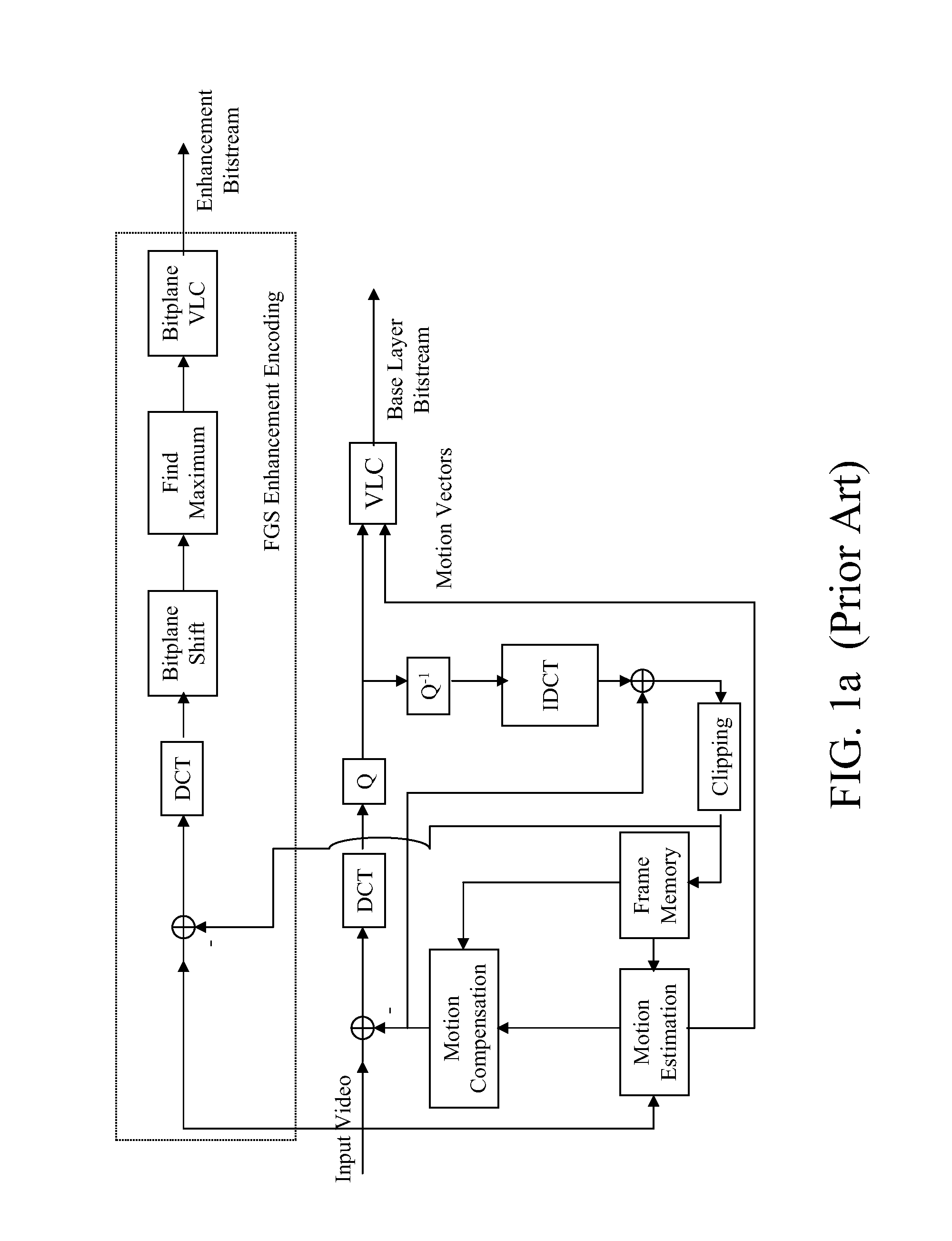Architecture and method for fine granularity scalable video coding
a video coding and fine granularity technology, applied in the field of video coding architecture and method, can solve the problems of difficult simultaneous stream or multicast video over internet or wireless channels to a wide variety, difficult to optimize video quality for a particular device, and difficult to deliver multimedia information to mobile devices over wireless channels and/or internet, etc., to achieve adequate video quality and improve coding efficiency
- Summary
- Abstract
- Description
- Claims
- Application Information
AI Technical Summary
Benefits of technology
Problems solved by technology
Method used
Image
Examples
Embodiment Construction
[0024]To prevent the error propagation due to packet loss in a variable bit-rate channel, a leaky prediction technique was used for the inter frame loop in DPCM and sub-band coding systems. Based on a fraction of the reference frame, the prediction is attenuated by a leak factor with a value between zero and unity. The leaky prediction strengthens the error resilience at the cost of coding efficiency since only part of the known information is used to remove the temporal redundancy. For a given picture activity and a bit error rate (BER), there exists an optimal leak factor to achieve balance between coding efficiency and error robustness.
[0025]The RFGS architecture of this invention focuses on constructing a better reference frame based on two motion compensated prediction techniques, leaky and partial predictions. The leaky prediction technique scales the reference frame by a factor α, where 0≦α≦1, as the prediction for the next frame. The leak factor is used to speed up the decay...
PUM
 Login to View More
Login to View More Abstract
Description
Claims
Application Information
 Login to View More
Login to View More - R&D
- Intellectual Property
- Life Sciences
- Materials
- Tech Scout
- Unparalleled Data Quality
- Higher Quality Content
- 60% Fewer Hallucinations
Browse by: Latest US Patents, China's latest patents, Technical Efficacy Thesaurus, Application Domain, Technology Topic, Popular Technical Reports.
© 2025 PatSnap. All rights reserved.Legal|Privacy policy|Modern Slavery Act Transparency Statement|Sitemap|About US| Contact US: help@patsnap.com



